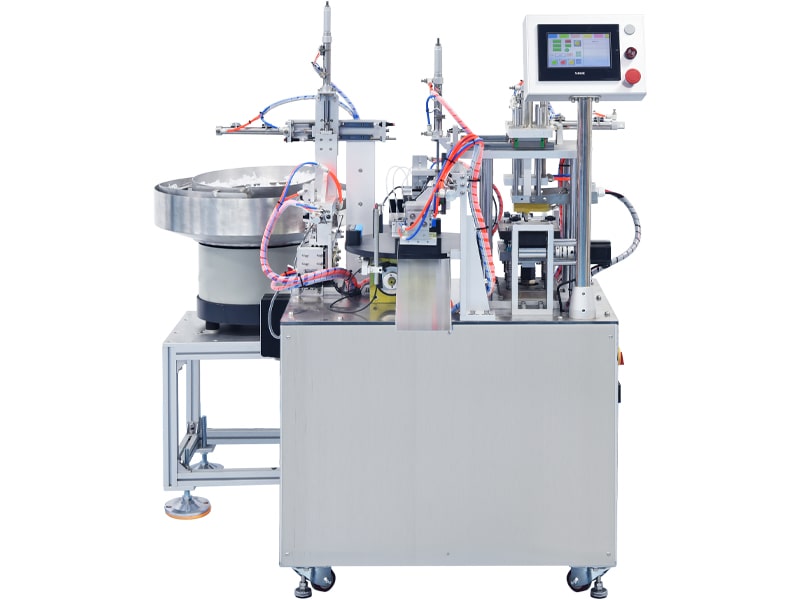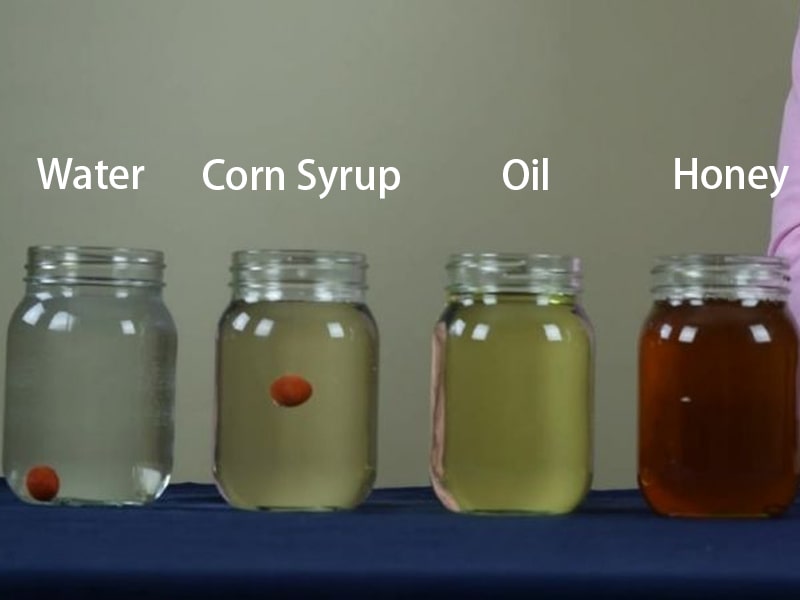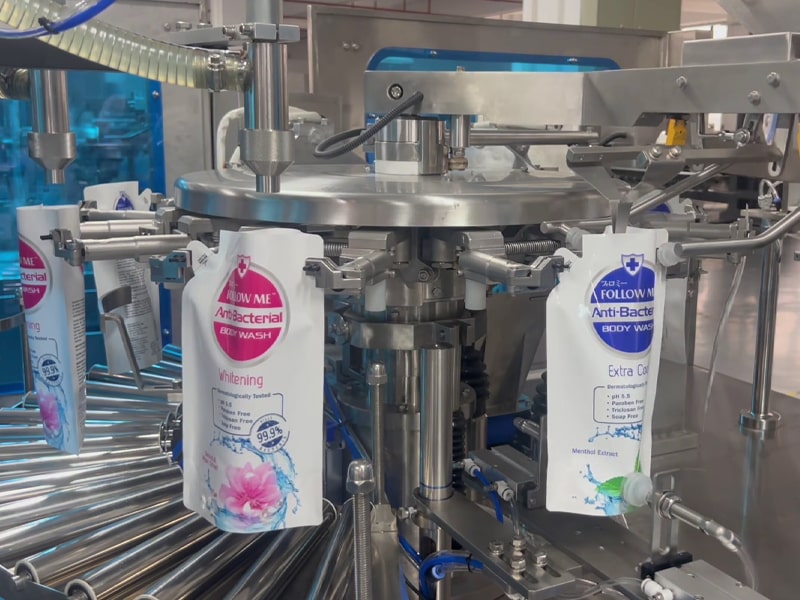In the world of laboratory science and industrial manufacturing, precision and efficiency are paramount. Among the numerous tools and equipment that facilitate these processes, reagent tubes stand out as indispensable components. These small, yet mighty, tubes play a crucial role in storing, transporting, and handling chemical reagents and biological samples. However, the true value of reagent tubes lies not only in their design but also in the process of filling them—specifically, the advanced machinery that automates this task. This article delves into the world of reagent tubes, exploring their uses, the science behind reagent filling, and how modern machinery is revolutionizing this process.
What Is a Reagent Tube? Definition, Materials, and Sizes
A reagent tube is essentially a laboratory test tube used to hold chemicals (“reagents”), samples, or mixtures during experiments and analyses. These tubes are typically made of glass or clear plastic and have an open top and a closed bottom. Common materials include heat-resistant borosilicate glass and fused quartz (for high-temperature work) or disposable plastics like polystyrene and polypropylene. For example, culture tubes in biology are often molded from clear polystyrene or polypropylene and discarded after use. Reagent tubes come in a range of sizes: microtubes (~0.5–2 mL) for PCR and microfuge work, and larger tubes (5–50 mL) for standard assays. Typical test tube dimensions are about 10–20 mm in diameter and 50–200 mm in length. The ends can be flat or round, and tubes often have a flared lip or screw cap for sealing. Because reagent tubes are used widely across disciplines, they may sit in racks or have stoppers, and some are color-coded or barcoded for tracking.
Materials: Laboratory-grade glass (borosilicate/quartz) for durability and heat tolerance; clear plastics (polystyrene, polypropylene) for low-cost or disposable use.
Sizes: Ranging from tiny 0.2–2mL microcentrifuge tubes (for molecular biology) up to 10–50mL test tubes or falcon tubes. Typical test tube diameters are ~10–20mm and lengths 50–200 mm.
Design: Open at one end (often with a flared lip or screw cap), closed at the other. Bottom shapes vary (flat, round, conical). Many reagent tubes accept stoppers or caps for sealing.
Reagent tubes are ubiquitous in the lab, serving as the basic containers for chemical and biological reagents. Whether glass or plastic, their construction and size depend on the intended use: glass for high-temperature or organic chemistry work, plastic for sterile disposability in bioassays.

What Are Reagent Tubes Used For?
Reagent tubes serve countless functions in medical, diagnostic, research, and clinical applications. In general, they store, mix, and transport the liquid or powdered reagents needed for assays. Examples include:
Clinical Diagnostics: In hospital and clinical labs, reagent tubes hold solutions used in blood chemistry, immunology, and serology tests. For instance, blood serum might be mixed with specific reagents in a tube to measure electrolytes or enzymes. Many diagnostic protocols involve pipetting patient samples into a reagent tube containing buffers or indicators. Notably, rapid test kits (e.g. lateral-flow antigen tests) instruct users to rehydrate lyophilized reagents in a provided reagent tube as the first step. (In one COVID antigen test, the first instructions are: “To begin the test, a lyophilized reagent must be rehydrated in the Reagent Tube… The Reagent Tube now containing the specimen and Reagent Solution…”.)
Laboratory Research: Biologists and chemists use reagent tubes for mixing and heating small volumes. In molecular biology, *PCR tubes* (a kind of microcentrifuge tube) hold DNA primers, polymerases, and samples during thermal cycling. Enzyme digests, small-scale syntheses, titrations, and spectrophotometry assays are all performed in reagent tubes. Tubes provide a convenient reaction vessel for any procedure requiring precise volume handling.
Microbiology and Cell Culture: Culture tubes (often plastic) hold live cells, bacteria, or tissues in liquid media. Sterile reagent tubes are used for inoculation, growing cultures, or vortexing samples. Their screw caps and vented plugs allow sterile gas exchange when needed.
Diagnostic Kit Components: Many kits (for ELISA, pregnancy, allergy testing, etc.) include pre-measured reagents in tubes. Tubes may contain buffers, enzyme substrates, or antibodies. During test protocols, the user adds sample to the tube and mixes (for example, mixing a blood sample with developer in a reagent tube to start a reaction).
Quality Control and Calibration: Clinical labs use reagent tubes to prepare control solutions and calibrators. Tubes hold standard solutions of known concentration that are used to check instrument accuracy.
Other Applications: Environmental testing (water analysis reagents), forensic analysis, veterinary diagnostics, and industrial quality control also rely on reagent tubes to contain and deliver precise chemicals.

In summary, reagent tubes are the basic containers of reagents and samples in virtually every lab assay. They are used wherever measured liquid handling and mixing are required – from hospital blood labs to pharmaceutical R&D. Their sterile, secure design ensures samples and reagents are handled safely and reliably.
How Are Reagent Tubes Filled?
Filling reagent tubes means dispensing precise volumes of liquids (reagents, buffers, solvents) into those tubes. This can be done on a small scale (manual lab work) or on an industrial scale (production of kits, bulk reagents).
Laboratory (Bench) Filling: In day-to-day lab work, technicians fill reagent tubes using pipettes and dispensers. A person might use a single-channel pipette to aliquot microliter reagents into individual tubes, or a multichannel pipette to fill many tubes in a rack. Digital pipettors and repeater pipettes speed up the task and improve consistency. For larger volumes, burettes or graduated dispensers may be used. Automated liquid handlers (robotic pipettors, e.g. Tecan, Hamilton) can also fill multiple tubes from a reservoir, combining reagents in programmable ways. These lab-scale methods prioritize flexibility and accuracy for small batches. Good pipetting technique (and regular calibration) is essential to ensure each tube receives exactly the intended volume.
Industrial/Production Filling: When producing hundreds or thousands of reagent tubes (as in kit manufacturing or reagent bottling), manual pipetting is impractical. Instead, specialized reagent filling machines are used. In such systems, tubes are usually loaded via hoppers or conveyors, liquid is pumped into each tube by precise pumps, and tubes are then capped and labeled automatically. These systems may run inside cleanrooms or isolators to keep reagents sterile. Typical steps in an automated filling line include: tube feeding (sorting empty tubes), filling with one or more reagents via pumps or gravity, capping or sealing, and sometimes labeling and inspection. For example, a continuous reagent filling production line might consist of a tube feeder, a multi-head filling station, a capping machine, and a labeling station.

Regardless of scale, the core challenge is always the same: dispense the correct volume of reagent into each tube without contamination. Manual pipettes rely on the user’s skill, while machines use precise pumps (peristaltic, piston, or time-pressure systems) and sensors to achieve high accuracy.
Reagent Filling Machines: How They Work and Key Features
A reagent filling machine (also called a reagent vial or tube filling machine) is an automated device designed specifically to dispense reagents or other small-volume liquids into tubes or vials with very high precision. These machines are engineered for the lab/medical industry and often comply with pharmaceutical/GMP standards. Core features of a typical system include:
Precision Pumping: Most machines use metering pumps (syringe pumps, peristaltic pumps, or piston pumps) for dispensing. These pumps are highly accurate, ensuring each tube gets the same volume. For instance, equipment descriptions note “high-precision metering pumps or peristaltic pumps to ensure consistent dosing per tube”. Small-volume tubes may be filled sequentially with microliter accuracy (often within ±1% error), while larger-volume tubes use higher-flow pumps. Some systems even switch between syringe (for tiny volumes) and peristaltic pumps (for bulk volumes) to optimize precision and speed.
High Throughput: Automated systems dramatically increase speed. Depending on the model, a reagent filling line can process hundreds or thousands of tubes per hour. For example, one high-throughput system can fill up to *1,000 tubes per hour* using parallel processes. High-speed lines often have multiple filling heads working in parallel, so many tubes are filled simultaneously before moving on to capping. This throughput meets the demands of large-scale diagnostic kit production or bulk reagent manufacturing.
Sterility and Clean Design: Since many reagents are sterile or sensitive, machines are built to maintain purity. Most reagent fillers are made from stainless steel (304/316L) and comply with GMP/cGMP hygiene standards. They often include Clean-In-Place (CIP) and Steam-In-Place (SIP) systems for automated cleaning between batches. Critical areas may be enclosed in isolators or equipped with HEPA-filtered laminar flow hoods to keep particles and microbes out. In fact, some systems explicitly offer “sterile applications” options: enclosed workstations with HEPA filters and laminar flow to ensure aseptic conditions. Vacuum or nitrogen systems can be integrated to minimize air contact during filling if required.
Tube Handling: Reagent fillers include automation for tube logistics. This can involve vibratory feeders or hoppers that sort and orient empty tubes, mechanisms to open caps, and precise feeders that place filled tubes into racks or conveyors. After filling, caps or stoppers are automatically applied and tightened. Barcode readers and vision systems may inspect tubes for correct fill height and seal integrity.
Flexibility: Modern machines are often modular, allowing quick changeover to different tube sizes or different liquids. Adjustable heads, interchangeable pump tubing, and software recipes mean the same machine can handle a range of tubes (e.g. 0.5 mL PCR tubes up to 50 mL centrifuge tubes) and different reagents (aqueous buffers, viscous solutions, volatile solvents, etc.).
Quality Control (In-Process Monitoring): Many systems include real-time monitoring. For example, some machines have integrated weighing modules or sensors that verify the volume of liquid dispensed in each tube. Barcodes can be printed/attached to tubes or racks, enabling traceability of which batch went into which tube. Software often records every fill volume and machine parameter, meeting regulatory requirements for data logging.
Throughput vs. Automation Level: Simple benchtop “batch” fillers may only fill one tube at a time (manual loading, semi-automated dispense), suited for small-scale labs. Fully automated lines handle continuous feeding of tubes and can integrate upstream (tube washing, depyrogenation) and downstream (labeling, packing) processes. In either case, compared to hand-filling, the automation greatly increases speed and consistency.
 |
| 24-head reagent filling machine |
Key Benefits: As one manufacturer puts it, modern reagent filling machines offer high precision, high efficiency, and hygienic design. High precision means consistent reagent volumes, which is vital for accurate test results and minimal waste. High efficiency (automation) enables large batches and meets production deadlines. Hygienic (GMP-compliant) construction ensures reagents stay uncontaminated. In practice, facilities using these machines report much tighter control over fill volumes and fewer errors than manual methods.
Precision, Sterility, and Speed in Reagent Filling
Three performance factors are especially critical in reagent filling processes: precision, sterility, and speed. Automated equipment is designed to optimize all three.
Precision (Accuracy & Reproducibility): Assay results depend on delivering *exact* reagent amounts. Even small errors in volume can skew a test. Automated reagent fillers use calibrated pumps and positive displacement methods to achieve extremely high accuracy (often better than ±1%). For tiny volumes (microliters), syringe-driven pipetting on the machine gives superb repeatability. As noted by industry analysts, automated systems “offer improved accuracy [and] precision” over manual methods. For example, the HTI Ultra system explicitly uses syringe pumps for very small fills so that “pipsing is very precise, so reproducibility of the results is ensured at all times”. In-line weighing or volume-check systems can instantly flag any tube that is underfilled or overfilled, further tightening quality control.
Sterility (Contamination Control): Many reagents (biological buffers, enzymes, cell media) must remain sterile. Any contamination can ruin the entire batch. Automated lines address this by enclosing critical steps. As seen in advanced tube processors, dedicated *sterile hoods with HEPA filters and laminar airflow* are offered for filling tasks. This ensures the reagent in each tube is not exposed to ambient air or particulates. Some filling machines run inside ISO-class clean booths or use closed-seaming technology. The industry trend toward single-use tubing and components (often cited in market reports) also reflects the need to *minimize cross-contamination*. In short, automation allows consistent sterile conditions that would be hard to maintain by hand, reducing batch failures and extending shelf life of reagents.
Speed (Throughput & Efficiency): Speed is crucial for meeting production demand. Automated systems can fill and cap tubes continuously, eliminating the idle time and human fatigue of manual pipetting. For example, as noted above, one reagent tube processor can handle up to *1,000 tubes per hour* in parallel flow. Market analysts emphasize that automation “enables laboratories to process large volumes of reagents quickly” and thus dramatically increases throughput. Faster filling means more kits or tests can be produced each day. High speed also reduces labor cost per tube: one operator can oversee a machine doing the work of many people. Crucially, despite the rapid pace, automated lines maintain accuracy and hygiene, so the speed gain does not compromise quality.

In summary, modern reagent filling equipment simultaneously meets stringent requirements: delivering every tube with the right volume, keeping the process sterile, and doing it at industrial scale. This triad of precision, sterility, and speed is what makes automated reagent filling machines indispensable in pharmaceutical and diagnostic manufacturing.
Automation Benefits for End-Users and Manufacturers
Automation of reagent filling delivers clear advantages across the board. For laboratories and end-users, automated filling means:
Consistent Quality: Every reagent tube is filled exactly the same way, reducing variation between batches. Tests performed with these reagents are more reliable.
Availability: Higher throughput ensures that manufacturers can supply enough reagent kits and solutions without delays. In public health crises (like the COVID-19 pandemic), automated filling let companies quickly scale up production of test reagents.
Traceability: Barcoded tubes and batch data help labs track exactly what was used for each test, aiding quality assurance and regulatory compliance.
Safety: Fewer human touches means less risk of spills, exposure to chemicals, or contamination by operators. Automation also eliminates repetitive strain injuries from manual pipetting.
For manufacturers and kit producers, the benefits are equally compelling:
Efficiency and Throughput: Automated lines dramatically increase output. Market reports note that switching to automated reagent filling “frees up laboratory personnel to focus on more value-added tasks” and boosts productivity. Manufacturers can meet large orders and tight deadlines far more easily.
Lower Error and Waste: Minimizing human error saves costly reagents and avoids rework or scrap. Automated metering pumps ensure fill consistency, which means less off-spec material.
Regulatory Compliance: Automated systems are designed to meet cGMP and FDA requirements. In-process monitoring, data logging, and built-in cleaning cycles (CIP/SIP) simplify audits and documentation.
Scalability: With modular automation, a manufacturer can run small pilot batches or full production runs on the same platform, adjusting capacity as needed without retraining staff.
Competitive Edge: Investing in automation signals quality and reliability to customers. For instance, Beckman Coulter recently announced a €10 million investment in two new fully automated reagent filling lines at its manufacturing site, explicitly citing gains in “efficiency and capacity”. This move underscores how industry leaders view automated filling as critical to innovation and growth.
Overall, automation in reagent filling benefits both ends of the supply chain. End-users gain faster access to consistent, high-quality reagents. Manufacturers gain higher throughput, better compliance, and reduced costs. As one market analysis notes, automated reagent filling systems “allow laboratories to maintain a high level of precision while increasing throughput” – a win-win outcome in today’s fast-paced research and healthcare environments.
In conclusion, reagent tubes are fundamental lab consumables, and the process of filling them (reagent filling) is being transformed by automation. Modern reagent filling machines combine precise pumps, sterile operation, and high speed to ensure efficient, compliant production of reagents. By automating this critical step, manufacturers improve quality and safety, and laboratories benefit from reliable, ready-to-use reagents – ultimately advancing research, diagnostics, and patient care.
| References: | |
| 1. | ”Test tube” –Retrieved from: Wikipedia |
| 2. | ISO 4788:2005 — Laboratory glassware — Graduated measuring cylinders |
| 3. | 《Eppendorf Safe-Lock Tubes 1.5 mL Technical Data Sheet》–Retrieved from:Eppendorf AG |






Comments